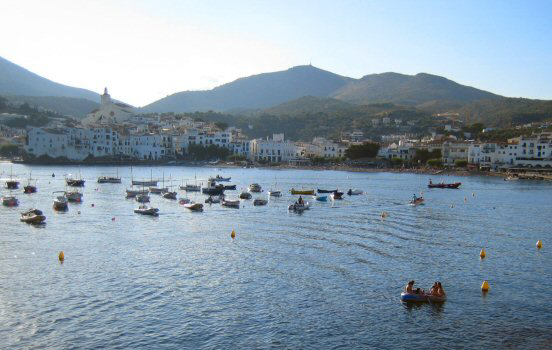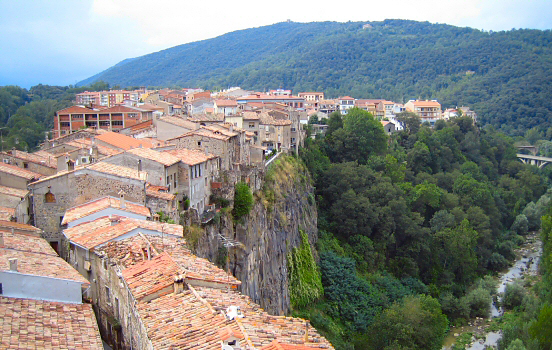There’s a jagged beauty to the Costa Brava. This stretch of Catalonian coastline isn’t the soft, easy postcard of Spain. It’s defiant and salt-crusted, a coastline where the Pyrenees nosedive into the Mediterranean like they’ve had enough of the world.
After conquering a tiny serpentine road through the mountains, I drive the rental through the narrow streets of Cadaques without hitting any pedestrian, cat or Vespa. Fortunately my vocabulary of Spanish curses is a bit thin, so the locals had to do with my Swedish favorite expressions instead, like “Men hallå, flöö daj!”. But after a short dip in the Mediterranean and a pizza with too much mozzarella, the rough driving part is almost forgotten.
 The road towards Cadaques.
The road towards Cadaques.
Cadaques is situated on a beautiful bay near the Cap de Creus peninsula. Salvador Dalí had a house nearby at Port Lligat. There are several traces of the artist in Costa Brava, for instance in the tiny town Figueres where he was born in 1904. He was later buried in the same town, under the cupola of Teatre-Museu Dalí.
 The port of Cadaques.
The port of Cadaques.
Another gem in the area is Castellfollit de la Roca, a medieval village built on top of a 50 meter high rock, surrounded by the rivers Fluvià and Toronell. The rock is a basalt formation, the result of river erosion of the lava from ancient volcanic eruptions which sculpted the stone. The 13th century church of Sant Salvador is dominating the skyline and we climbed the tower for a great view.
 Castellfollit de la Roca.
Castellfollit de la Roca.
The village Banyoles is most famous for the Lake of Banyoles, where the rowing events in the 1992 Barcelona Olympics took place. It’s worth a stop to walk along the lake, where a park bench turns out to be a good place for my breakfast picnic.
In the nearby area Santa Pau I climb the old volcano, Volca de Santa Margarida, situated 700 meters above sea level. It’s not exactly Vesuvius, but still a nice contrast in the flat land.
Costa Brava is’t easy. It’s not meant to be. It’s rough around the edges, stubbornly Catalan and uniquely beautiful in all its rugged madness.

Comments
No comments yet.
Leave a reply